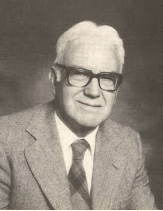| Profile | Major Works | Resources |
Ivor Frank Pearce, 1916-2001

British economic theorist.
After finishing school in Bristol, England, Ivor Frank Pearce qualified as an accountant and worked in private industry from 1932 to 1939. With the outbreak of World War II, Pearce served in the British Army from 1940 to 1946. After the war, Pearce enrolled as an undergraduate in economics at the University of Bristol in 1946, completing his degree in 1949. He was a lecturer at Nottingham from 1949 to 1956, along the way picking up a Ph.D. from the University of Nottingham in 1954. Pearce moved to Australia, and become a Reader and subsequently professor at the Australian National University in Canberra from 1956 to 1961. Ivor Pearce returned to Britain in 1962, becoming professor of economic theory at the University of Southampton, presiding over the growth of that department, until his retirement in 1981.
Ivor Pearce made numerous seminal contributions to demand theory, international trade and general equilibrium theory. Pearce famously took issue with Samuelson's "factor price equalization" theorem, highlighting the problems of factor intensity reversals (with James, 1952) and the problems arising with a large number of commodities (1959). Pearce provided the general derivation of community indifference curves (1964).
From 1966 to 1976, Ivor Pearce was involved in the construction of the "Southampton Model", an econometric model of the United Kingdom. In the latter part of his career, Pearce worked on problems of of the world monetary system.
|
Major Works of Ivor F. Pearce
|
|
HET
|
|
Resources on Ivor Pearce
|
All rights reserved, Gonšalo L. Fonseca
